|
|
|
|
(Worked right to left.) (Even numbered lightning warp strand in bottom layer of the shed.) |
|
|
|
Row 1:
Pass the [part 1] weft strand through the [part 1] shed.
Pass the [part 1] weft strand through the [part 1] shed to the the sixth lightning color strand. |
[figure-24] [click here to see video]
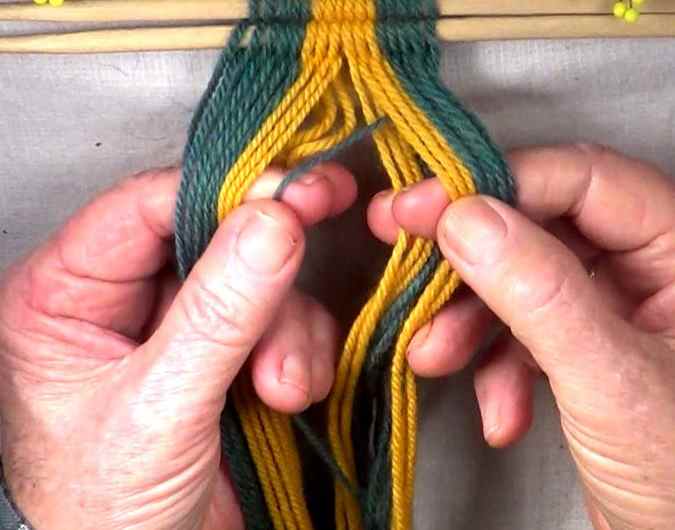
|
| Top of page | Next: figure 25 |
|
Row 1:
Interlock the [part 1] weft strand and the sixth lightning color strand.
|
[figure-25][click here to see video]
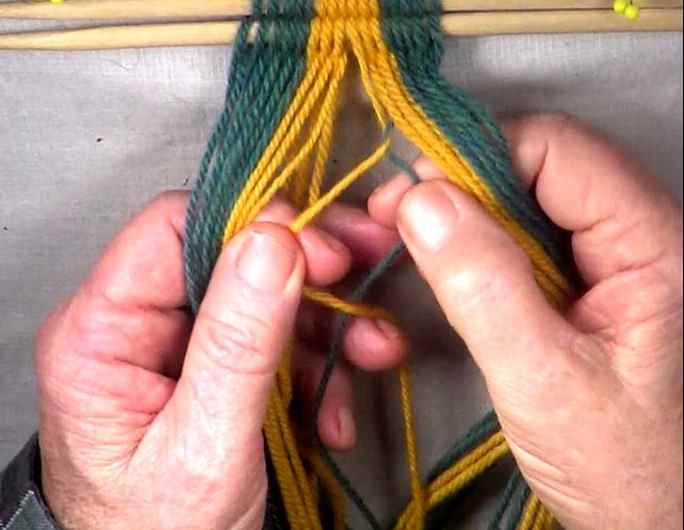
|
| Previous: figure 24 | Next: figure 26 |
|
Row 1:
Pass the [part 2] weft strand through the [part 2] shed.
[NOTE] The Row 1 [part 2] shed is made up of the Row 1 warp strands from the first Row 1 interlock to the sixth background color warp strand on the left hand side of the work-piece. Then pass the [part 2] weft strand through the [part 2] shed to the sixth warp strand of the background color. |
[figure-26][click here to see video]

|
| Previous: figure 25 | Next: figure 27 |
|
Row 1:
Interlock the [part 2] weft strand and the sixth background color warp strand.
[OBSERVE] The [part 2] weft strand is folded down over the sixth background color warp strand. |
[figure-27][click here to see video]
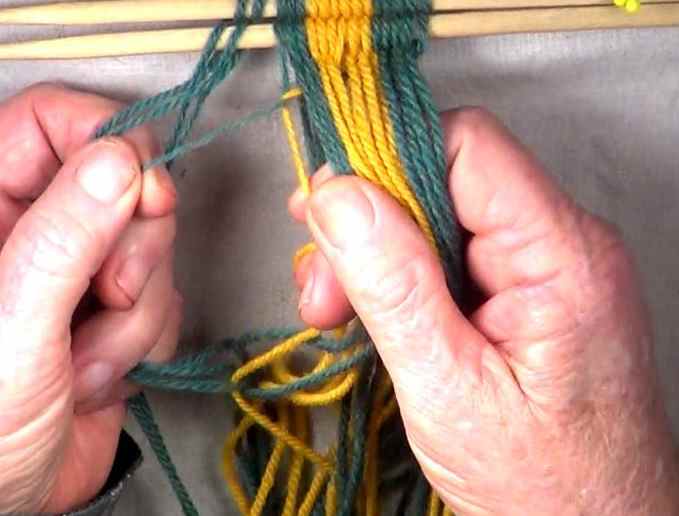
|
| Previous: figure 26 | Next: figure 28 |
|
Row 1:
Pass the [part 3] weft strand through the [part 3] shed.
Then pass the Row 1 [part 3] weft strand through the Row 1 [part 3] shed to the right hand edge of the work-piece. |
[[figure-28][click here to see video]

|
| Previous: figure 27 | Next: figure 29 |
|
Row 1:
Secure the [part 3] weft strand.
Place the adjacent [part 3] warp strand over the index finger of the left hand. Then transfer the Row 1 shed to the index figer of the left hand. |
[figure-29][click here to see video]
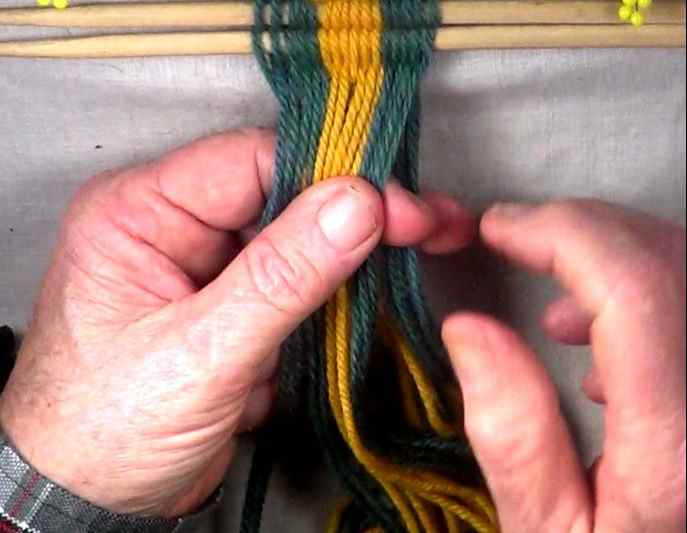
|
| Previous: figure 28 | Next: figure 30 |
|
Row 1:
Reverse the shed and set the weave.
Set the weave; Pull the shed layers in opposite directions. Check to make sure that all warp strands are snug and even. |
[figure-30][click here to see video]

|
| Previous: figure 29 | Next: figure 31 |
|
Row 2:
Pass the [part 1] weft strand through the [part 1] shed.
Pass the [part 1] weft strand through the [part 1] shed to the fifth warp strand of the lightning color. |
[figure-31][click here to see video]
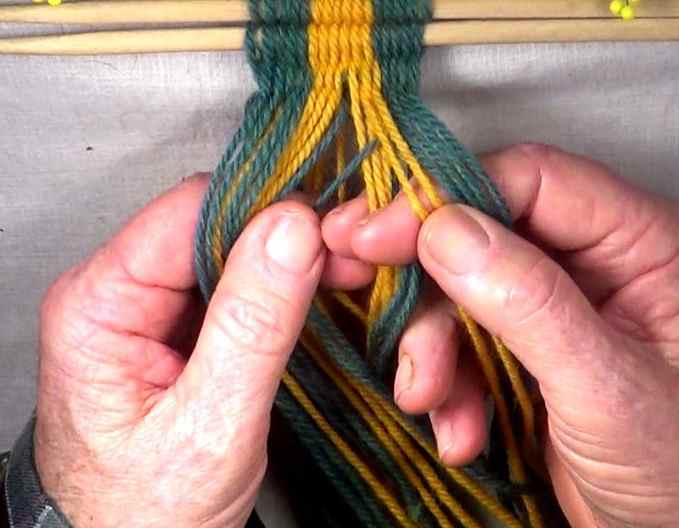
|
| Previous: figure 30 | Next: figure 32 |
|
Row 2:
Interlock the Row 2 [part 1] weft strand and the fifth lightning color warp strand.
The fifth lightning color warp strand becomes the Row 2 [part 2] weft strand. |
[figure-32][click here to see video]
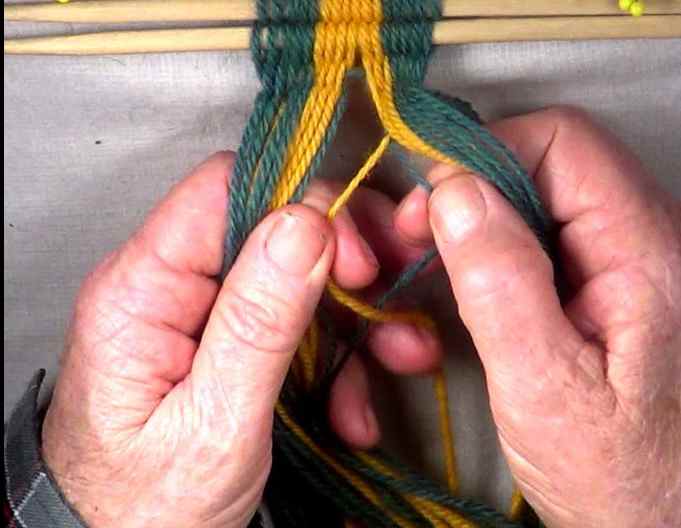
|
| Previous: figure 31 | Next: figure 33 |
|
Row 2:
Pass the [part 2] weft strand through the [part 2] shed.
Then pass the [part 2] weft strand through the [part 2] shed to the fifth background color warp strand. |
[figure-33][click here to see video]
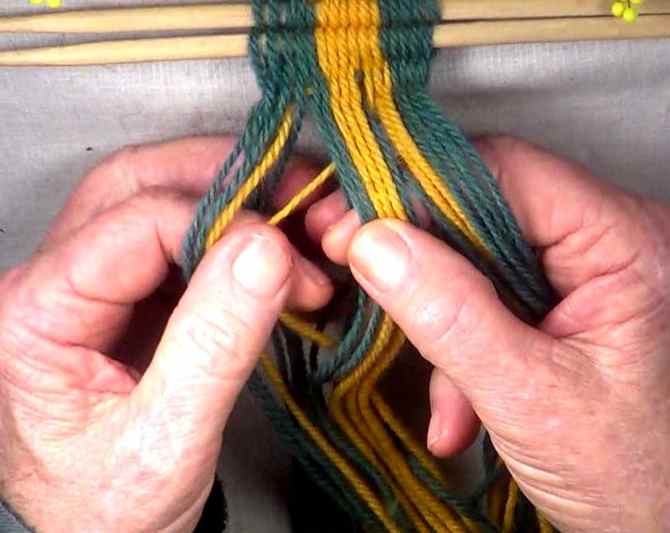
|
| Previous: figure 32 | Next: figure 34 |
|
Row 2:
Interlock the [part 2] weft strand and the fifth background color warp strand.
The fifth background color warp strand becomes the Row 2: [part 3] weft strand. |
[figure-34][click here to see video]
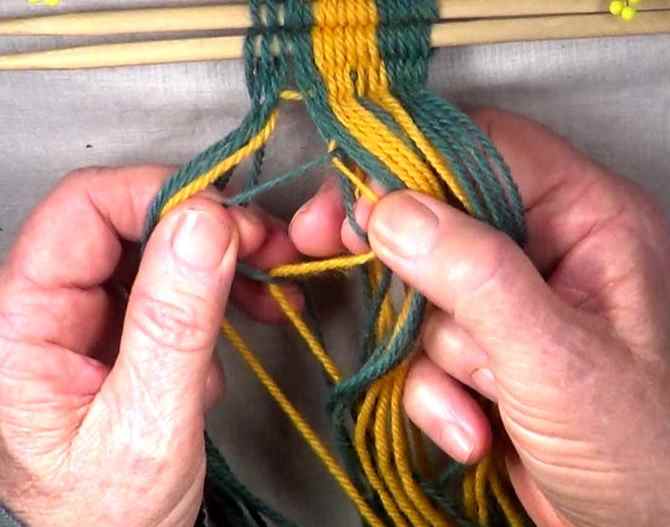
|
| Previous: figure 33 | Next: figure 35 |
|
Row 2:
Pass the [part 3] weft strand through the [part 3] shed.
Then pass the Row 2 [part 3] weft strand through the Row 2 [part 3] shed to the left hand edge of the work-piece. |
[figure-35][click here to see video]
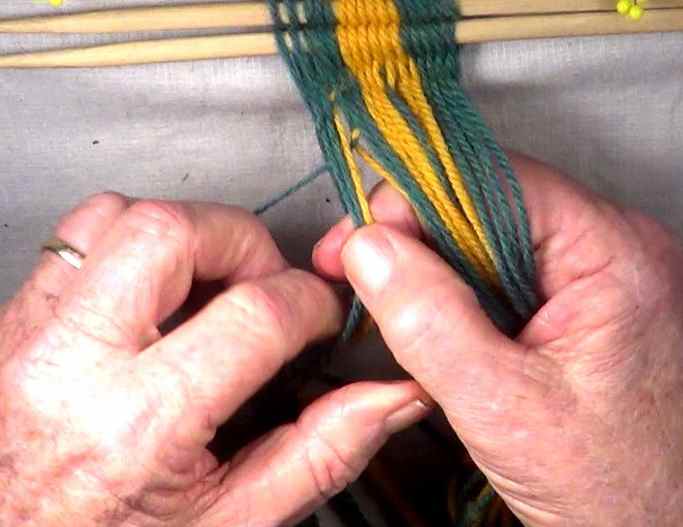
|
| Previous: figure 34 | Next: figure 36 |
|
Row 2:
Secure the [part 3] weft strand .
Then transfer the Row 2 shed to the index finger of the left hand. |
[figure-36][click here to see video]
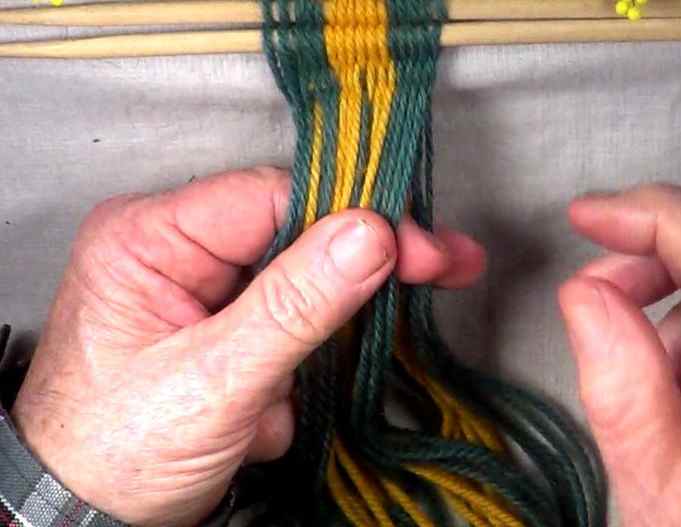
|
| Previous: figure 35 | Next: figure 37 |
|
Row 2:
Reverse the shed and set the weave.
Set the weave; Pull the shed layers in opposite directions. Check to make sure that all warp strands are snug and even. |
[figure-37][click here to see video]
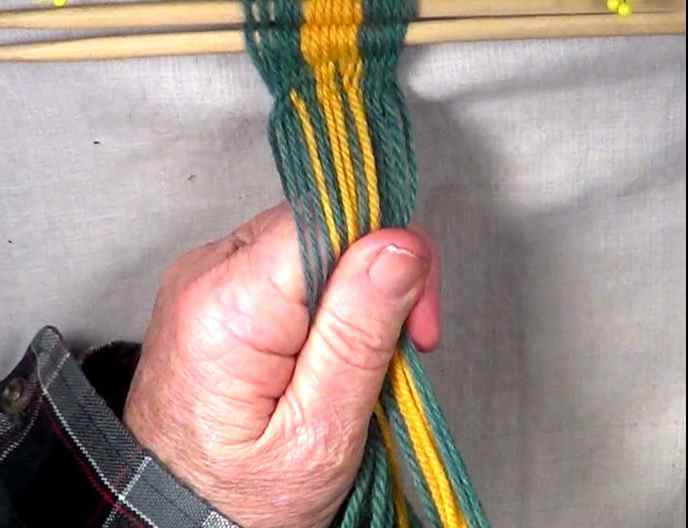
|
| Previous: figure 36 | Next: figure 38 |
|
Row 3
Follow the procedure for weaving row 2.
|
[figure-38][click here to see video]
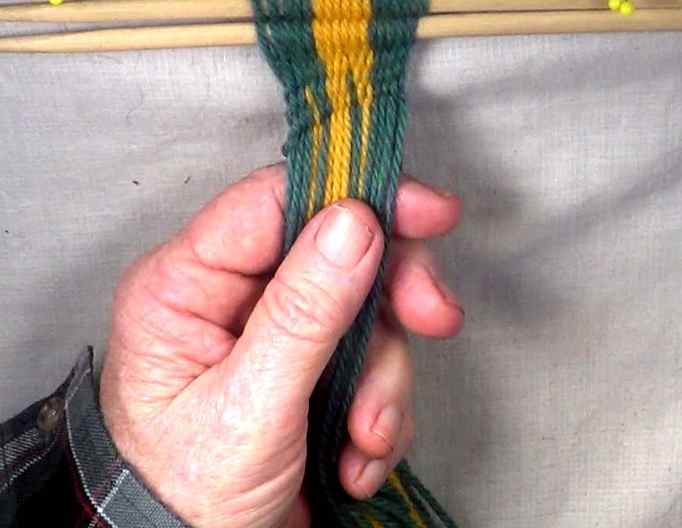
|
| Previous: figure 37 | Next: figure 39 |
|
Row 4
Follow the procedure for weaving row 2.
|
[figure-39][click here to see video]
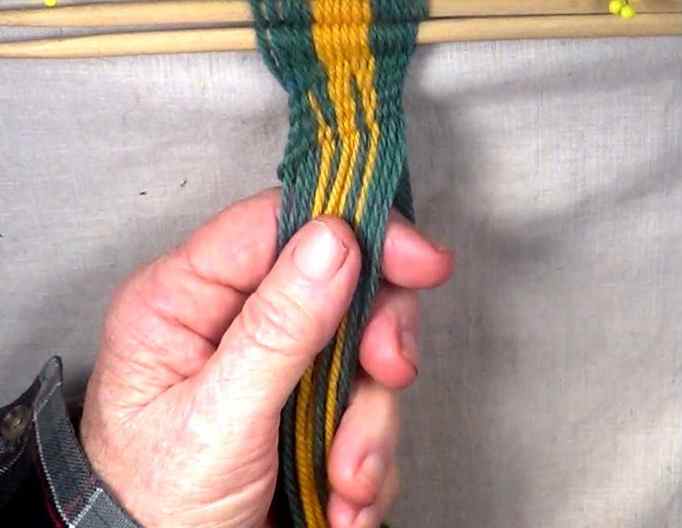
|
| Previous: figure 38 | Next: figure 40 |
|
Row 5
Follow the procedure for weaving row 2.
|
[figure-40][click here to see video]
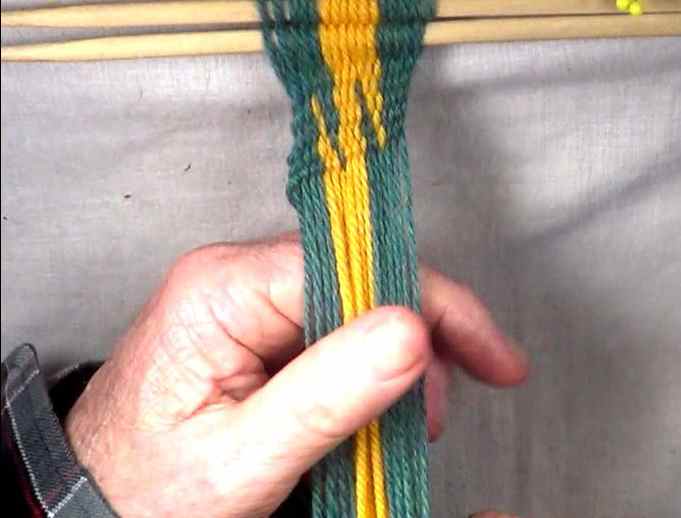
|
| Previous: figure 39 | Next: figure 41 |
|
Row 6
Follow the procedure for weaving row 2.
|
[figure-41][click here to see video]
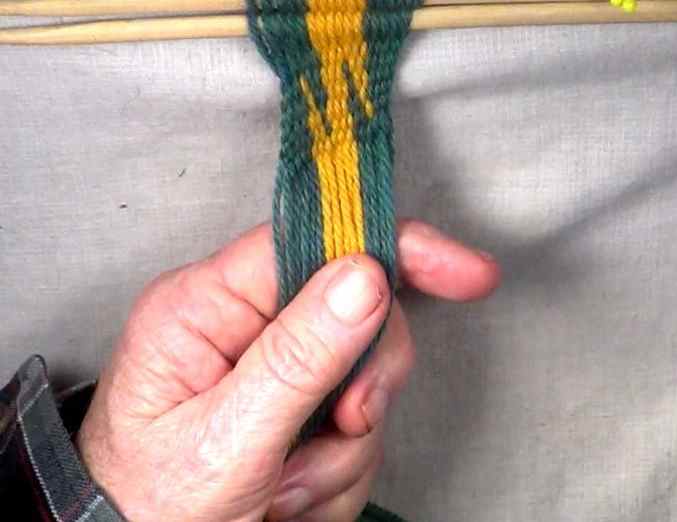
|
| Previous: figure 40 | Next: figure 42 |
|
Start the next set of 6 rows of weaving by following the procedure for weaving row 1. Continue adding sets of 6 rows of weaving untill the work piece reaches the desired length. [OBSERVE] When the work pieces are turned over on a horizontal plain, the weaving patterns produced in parts 1 and 2 of this tutorial are the opposite sides if each other . However they are not mirror images. |
[figure-42][click here to see video]
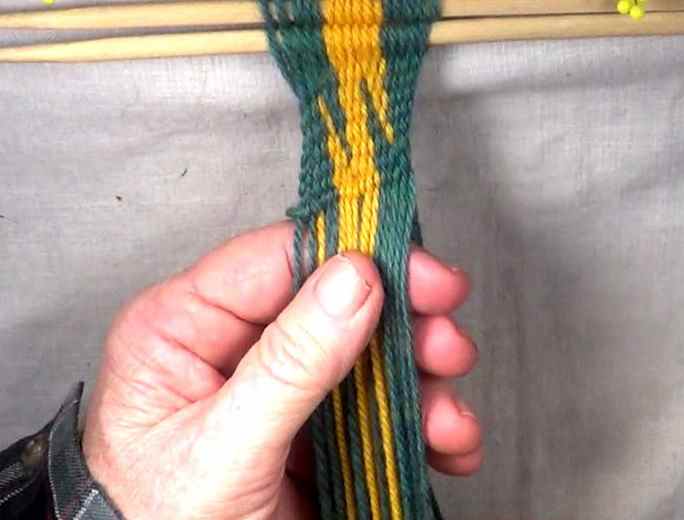
|
| Previous: figure 41 | Go to Top of Page |
|
|